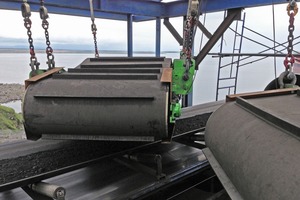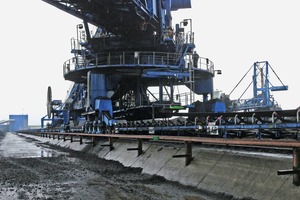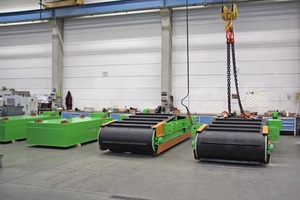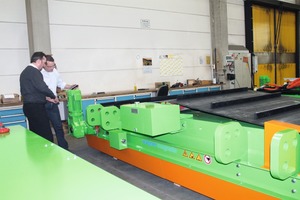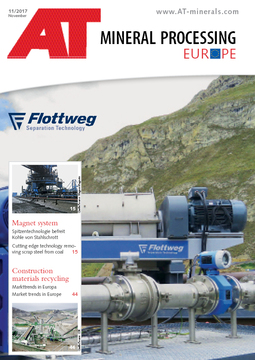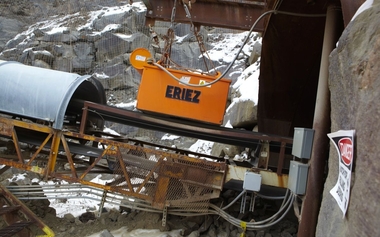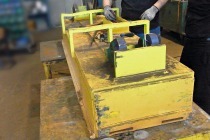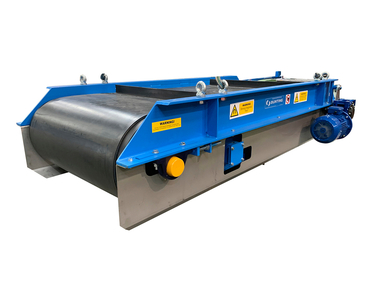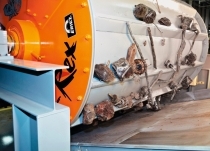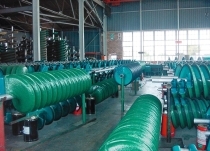Cutting edge technology removing scrap steel from coal
At the Russian port, the system from the magnet manufacturer is to clean coal, removing any scrap iron mixed in with it. The coal delivered from mines on freight trains is often frozen from its transport exposed to the elements and has to be crushed immediately after waggon unloading. In the coal there is a lot of scrap iron – mainly tools or parts of tools from mines or steel parts from excavators, crawlers, cranes or railway waggons.
“For the port operator, it is crucially important that the coal is as freed of as much of the iron as possible before loading for shipping. This is because during unloading of the ships at the destination port, detectors analyse the coal “with a fine toothcomb” to find any metal components. Each filtered out scrap part must be removed – that costs time and money: The more scrap found at the destination port, the less the buyer pays for the coal delivery,” says Thomas Zrenner, sales manager responsible for eddy current separators, magnetic separators and metal detectors.
After unloading of the waggons, belt conveyors transport the coal to large crushers. The Wagner technology is positioned over these belts and prevents large iron components from reaching the crushers. In several sections, the magnets draw out more scrap parts before the coal is stored intermediately and checked again shortly before being loaded onto ships. The Wagner magnets are to remove scrap from 2 mill. t coal per month in the East Russian port and therefore considerably increase the value of the coal shipments. “If the port operators meet this requirement, the multi-million investment in our magnet systems will pay back within two years,” says Thomas Zrenner.
Wagner Magnete GmbH & Co. KG, which manufactures 80 % of its individual parts and assemblies in house, supplied two overbelt electromagnets, four lifting magnets and four high-energy neodymium permanent magnets to Russia. Each electromagnet is fitted with coils consisting of aluminium wire with a length of 27 km – each coil has over 3000 windings and weighs 3 t. The total wire length used in this order measures 162 km. The supplied Wagner technologies are customized products fabricated at the main plant at Heimertingen.
As tool steel becomes brittle at extremely low outside temperatures and breaks easily, the company in the Allgau region of Germany uses special steel for all load-bearing parts in production. To prevent cold cracks in the weld seams, the steel used also had to be preheated to over 250 °C immediately before welding. In Germany Wagner magnets of this type have been used for many years at the most important national trans-shipment port in Hamburg to remove scrap steel from coal directly after it has been delivered.
$(LEhttp://

